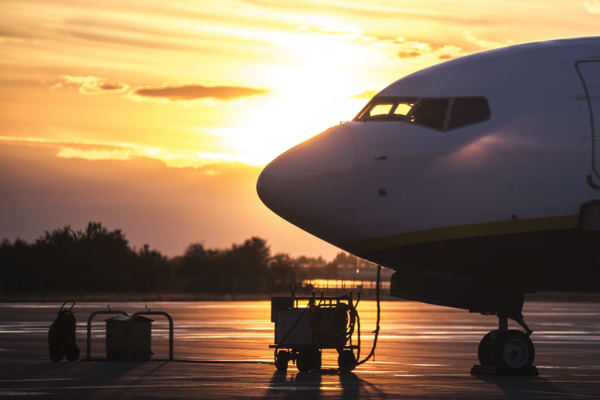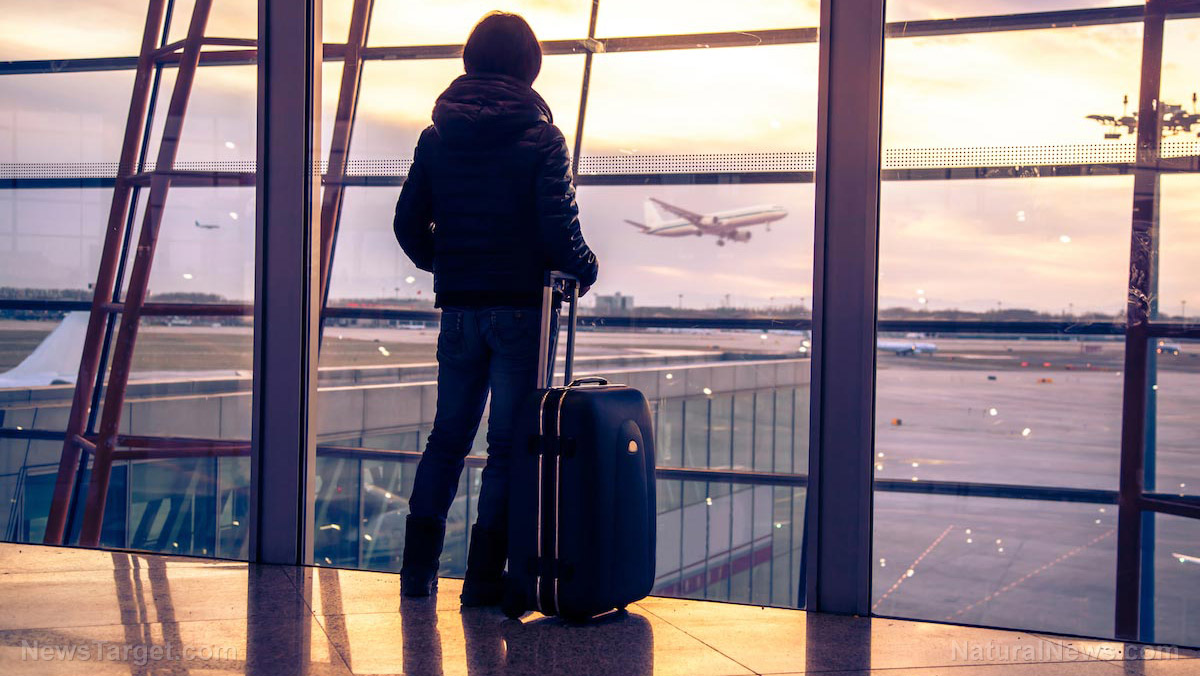Hundreds of flights delayed: United’s tech outage reverberates amid warnings of systemic aviation vulnerabilities
08/08/2025 / By Willow Tohi

- On the evening of Aug. 6, United Airlines’ nationwide flight disruptions began due to a technical outage in its Unimatic system, stranding passengers and causing over 1,000 delays.
- The incident mirrors an earlier Alaska Airlines IT outage in July, prompting concerns over systemic vulnerabilities in aviation tech systems.
- United resolved the outage but warned of residual delays, while the FAA downplayed broader risks, attributing the issue to internal airline systems.
- Passengers at airports nationwide reported prolonged wait times, poor onboard conditions and lost travel plans due to ground stops.
- Experts and officials stress the need for stronger tech oversight and human safeguards amid rising aviation system dependencies.
On the evening of Wednesday, August 6, United Airlines grappled with a widespread technology outage that disrupted flights across the U.S., grounding planes and stranding thousands of passengers at hubs like Denver and Newark. The airline attributed the chaos to a failure in its weight-and-balance system, Unimatic, resolving the issue by midnight but leaving a trail of confusion and frustration. This incident follows a similar Alaska Airlines outage weeks prior, and as authorities dismiss these glitches as isolated, experts argue the pattern signals deeper systemic flaws in aviation’s reliance on digital infrastructure—a reality amplified by recent technical failures at critical nodes like the New York Stock Exchange.
Technical anomalies in United’s system trigger widespread chaos
At 6:12 p.m. ET, United pilots nationwide began reporting errors in the Unimatic system, which calculates crucial load and balance data needed for safe takeoffs. The airline’s ground control issued immediate stops, halting departures and cascading delays. FlightAware tracked over 1,000 delayed flights and 1% cancellations by Thursday morning, with stranded travelers facing baking cabins, canceled accommodations and transportation scrambles.
Passenger Angela Jeffers, delayed in Nashville, recounted the captain’s vague announcement: “We’re missing some numbers we need to take off,” leaving travelers “baking in here for hours” without AC or clear timelines. In Denver, Jessica Jeffers faced similar trials: “We have to either deboard or stay with no direction,” she said, while Johan Kotze in New Orleans prepped for a delayed Mauritian vacation, forced to rebook flights and “essentially vacation in a hotel.” United compensated some passengers with hotels but provided little transparency.
A pattern of failures: United joins recent wave of tech-driven travel disruptions
This outage echoes Alaska Airlines’ crippling July IT outage, which shut down its entire system for three hours—grounding hundreds of flights. The parallel failures come as tech snarls extend beyond aviation: in 2024, a mysterious “glitch” paralyzed the NYSE for 90 minutes. Though authorities dismiss such incidents as routine, critics see a trend of outdated systems failing under pressure.
“The broader question,” said aviation security analyst Dr. Lena Torres, “is whether airlines prioritize profit-driven tech upgrades over fail-safes. United’s Unimatic, introduced in 2019, clearly hasn’t evolved to handle core system demands under stress.” Federal Transportation Secretary Sean Duffy called this outage “internal to United,” but travelers and industry watchdogs remain skeptical, noting the FAA’s acknowledgment of ongoing flight backlog management.
Security and safety concerns in an over-tech-reliant world
The Federal Aviation Administration emphasized that Wednesday’s disruptions were isolated to United’s systems, unrelated to infrastructure like air traffic control. However, this assurance glosses over broader risks: modern aviation depends on complex tech layers, from flight planning to weather algorithms, each a potential point of failure.
Breitbart News recently highlighted how these “glitches” pose safety hazards, complicating pilot response times and stressing emergency protocols. “Human oversight must remain central,” urged Torres, citing United’s delays in addressing stranded passengers. “When tech fails, airlines can’t onboard manually fast enough to meet safety and legal obligations.”
Foreseeable risks and calls for accountability
As United scrambles to clear delays, the real challenge lies in systemic accountability. Congress is now debating bills requiring airlines to bolster tech redundancies and emergency protocols. Representative Linda Morgan (D-CA) warned: “We can’t let these disruptions become commonplace. Unless regulators enforce tech integrity, such outages will escalate.”
United and Alaska have yet to disclose root causes, though neither incident involved cyberattacks—a key point for the airlines. “This isn’t hacking,” said Kris Van Cleave, a CNN aviation reporter, referencing the Unimatic fix. “But it’s a wake-up call about outdated systems.”
Beyond the chaos lies a call to reinvent aviation’s safeguards
Wednesday’s United outage wasn’t an isolated incident but a stark reminder of aviation’s tech overreach. As travel demand strains airlines further, the sector must retool its infrastructure to harmonize innovation with resilience. Until then, passengers will remain at the mercy of computer systems designed for convenience—not contingency.
Sources for this article include:
Submit a correction >>
Tagged Under:
air travel, aviation system, chaos, flying cars, Glitch, information technology, public transportation, robocars, tech failure, travel disruptions, Unimatic system, United Airlines
This article may contain statements that reflect the opinion of the author
RECENT NEWS & ARTICLES
COPYRIGHT © 2017 COMPUTING NEWS

















